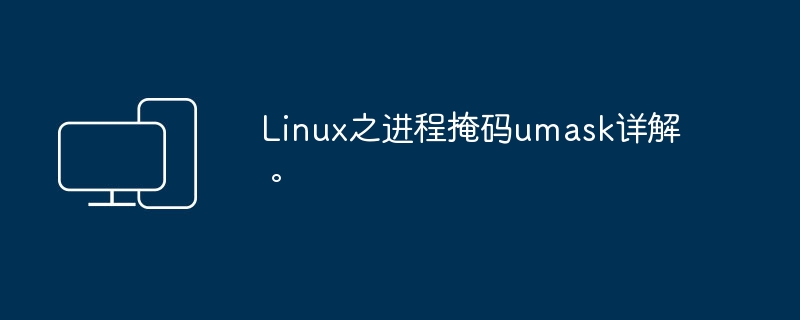

In Linux systems, the umask command is used to set the default file permission mask, which will affect the default permission values when new files or directories are created. The umask value determines the initial permissions of the file. It is a mask that is subtracted from the default permissions of the file.
The umask value consists of three octal numbers, representing the permission masks of users, groups, and other users. The function of umask is to limit the default permissions by blocking specific permission bits when creating files or directories to enhance system security. The setting of umask can ensure that newly created files or directories do not have too loose permissions and avoid potential security risks. By adjusting the umask value, system administrators can effectively manage users' access rights to files and directories, thereby improving the overall security of the system
The umask value is used to subtract the set permission bit from the default permission value (666 or 777). For example, if the umask value is 022, then the write permission bit (second bit) in the default permissions will be turned off. This means that when a new file is created, its permissions will be set to 644 (i.e. rw-r--r--). The function of the umask value is to control the permissions of the new file or directory, and limit the permissions of the file or directory by subtracting the permission bits from the umask value. This ensures that files or directories created by users do not have permission settings that are too loose, thereby enhancing system security. The umask value is usually expressed as a three-digit number, which corresponds to the permission settings of the file owner, the group to which the file belongs, and other users. By setting the umask value appropriately, you can effectively manage the permissions of files and directories to ensure the security and stability of the system
Umask can be set in the user's shell configuration file (such as ~/.bashrc), or you can use the umask command directly on the command line for temporary settings.
The general syntax for using the umask command is as follows:
umask [mode]
Among them, mode represents the umask value to be set. If mode is not specified, the umask command displays the current umask value.
To understand the role of umask, you need to understand the following points:
Summary:
umask is the command to set the default file permission mask in the Linux system. It determines the default values for various permission bits when creating new files or directories. The umask value improves system security by turning off specific bits in the default permissions. The setting of umask can be set temporarily through the umask command or set in the user's shell configuration file.
The above is the detailed content of Detailed explanation of Linux process mask umask.. For more information, please follow other related articles on the PHP Chinese website!




